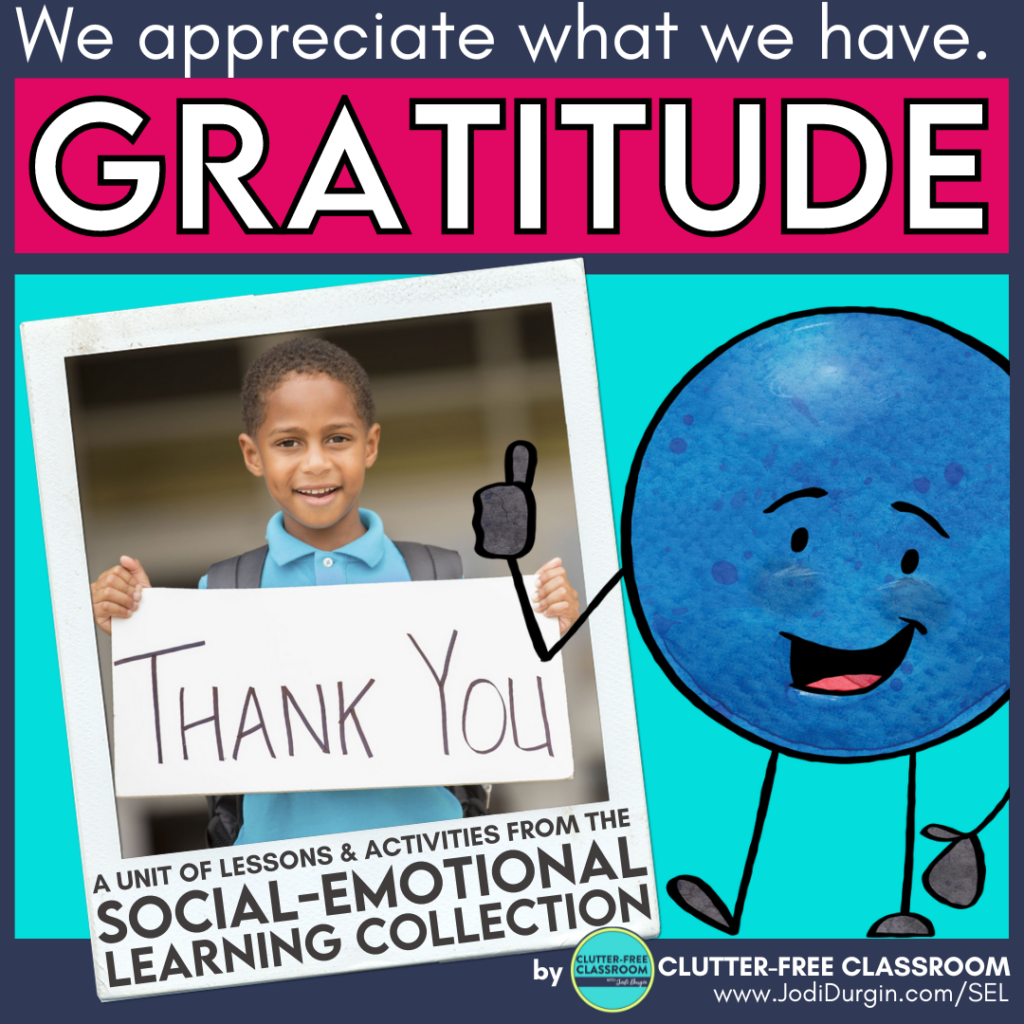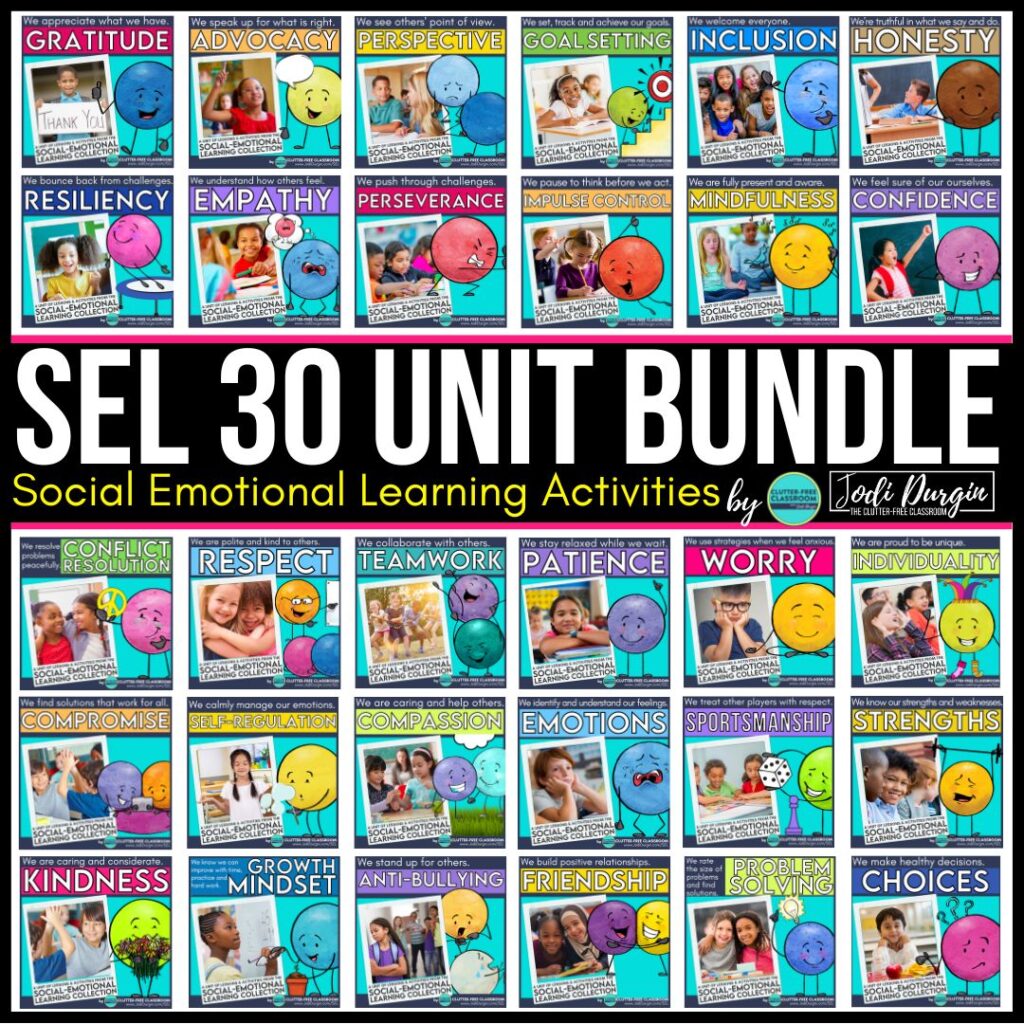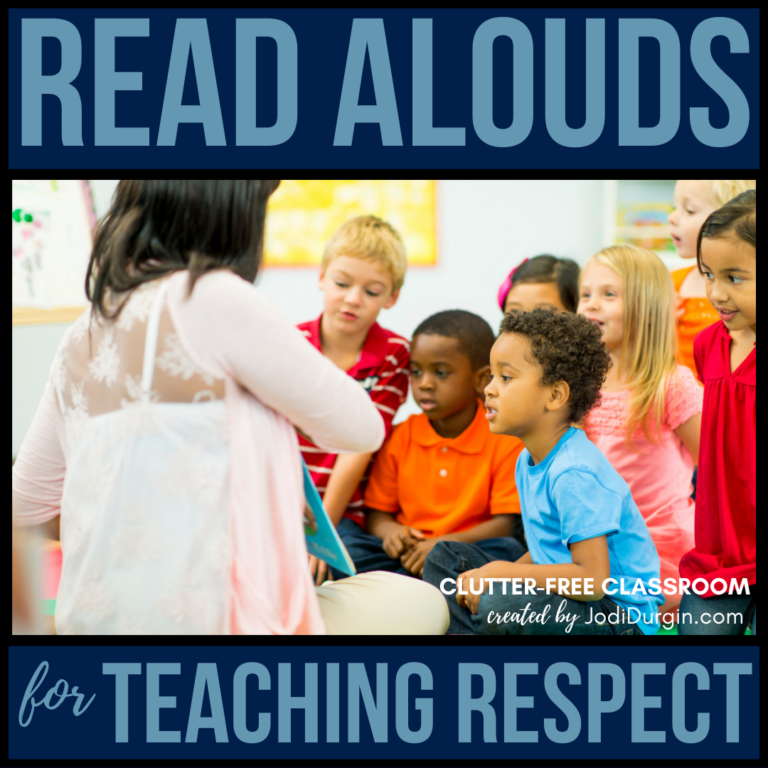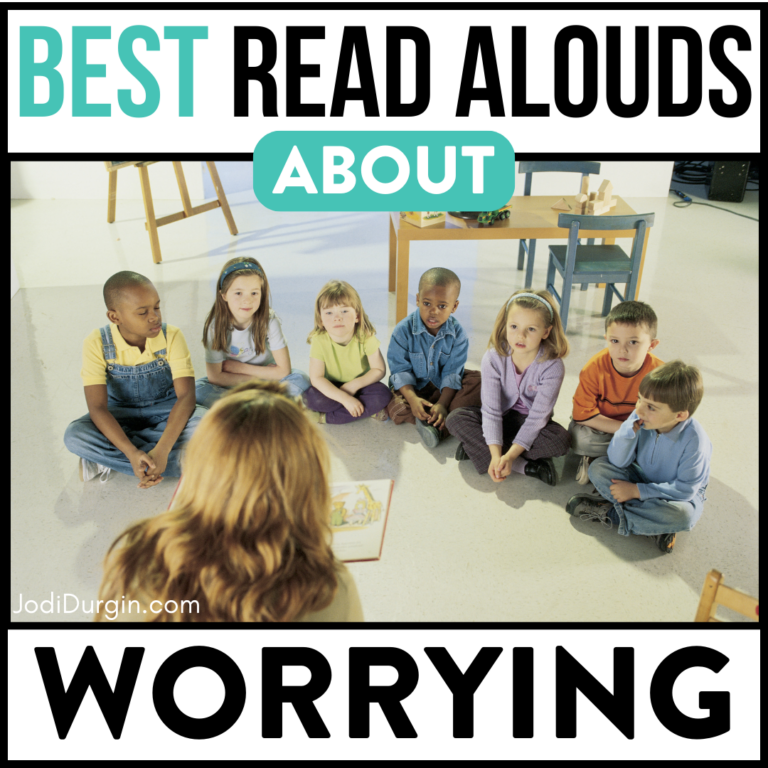If you are an elementary teacher looking to learn how to help your students show gratitude, then you found the right place! Gratitude skills prepare kids to show appreciation for what they have and show thanks. In this post, we’ll go into detail about what gratitude is and why it’s important. In addition, we’ll share tips and ideas for how to teach gratitude skills to elementary students. Read all about helping students show gratitude in and out of the classroom below!
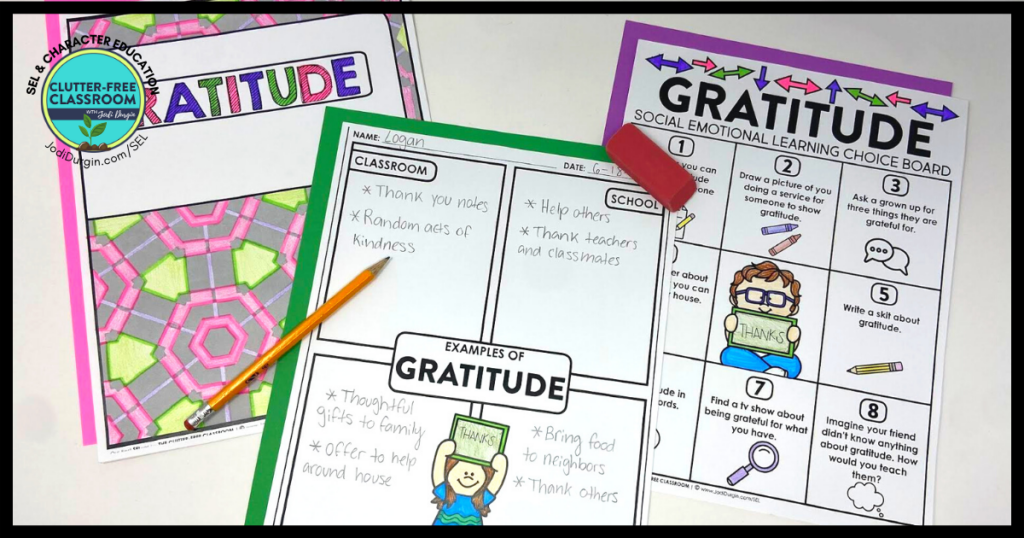
What Does Gratitude Mean?
Gratitude means being thankful, showing appreciation and returning kindness with kindness. When someone is kind to a person who is grateful, they will show gratitude and give kindness back to that person. People who have gratitude appreciate what they have and think deeply about what they can do for others.
Why is it Important for Kids to Show Gratitude?
It is important for kids to show gratitude because it teaches them to show appreciation for what they have instead of focusing heavily on what they do not have. It helps them stay away from jealousy and show the people that they care about that they love them and are thankful for them.


How Do I Know If I Need to Teach Gratitude in My Classroom?
The students in your 1st, 2nd, 3rd, 4th or 5th grade classroom would benefit from gratitude lessons and activities if any of these statements are true:
- Students are frequently showing jealousy.
- They are using statements like “I wish I had that” or “your toy is so much cooler than mine”.
- They have a hard time brainstorming what they are thankful for.
- Students aren’t showing kindness to others.
- They are constantly seeking something better than what they already have.


4 Reasons To Promote Gratitude In Your Elementary Classroom
Below are 4 reasons to promote gratitude in your elementary classroom.
1. Students will have improved happiness
People who show gratitude have improved happiness and mental health than those who do not. Instead of focusing on all the things that they do not have, students will focus on the people and things in their life that they do have and are thankful for.
2. Students will create stronger relationships
Students who show gratitude will create stronger relationships with each other because they will be showing each other how much they appreciate them. This can help build stronger connections with others.

3. Gratitude helps students be resilient
Gratitude helps students be resilient because it causes students to be more optimistic and focus on positive emotions. When faced with a challenge, students can use that positivity to help get them through their obstacles.
4. Students will be kinder to each other
Students will naturally be kinder to each other when they show gratitude towards each other. They will actively be taking the time to show appreciation for each other and seek out the positives in each other.
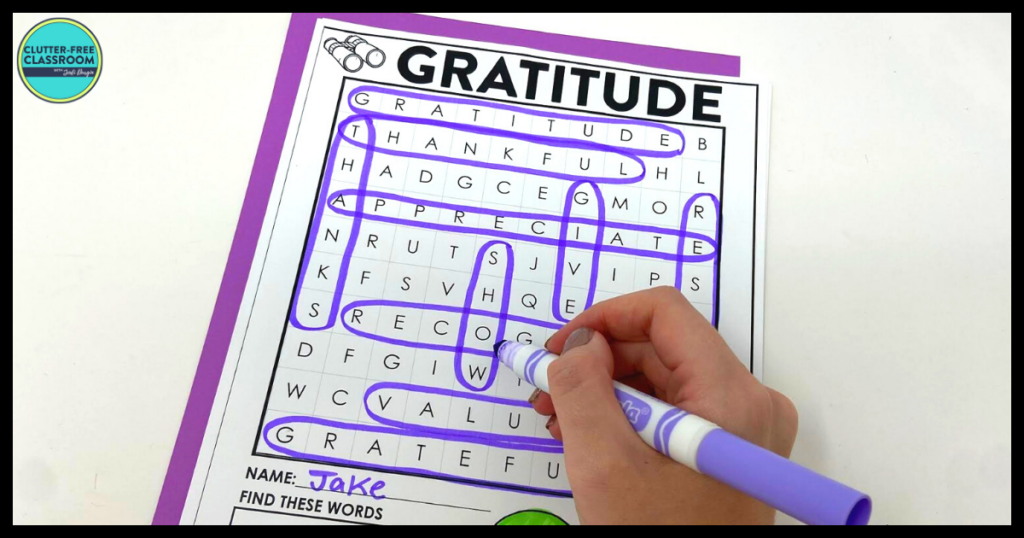
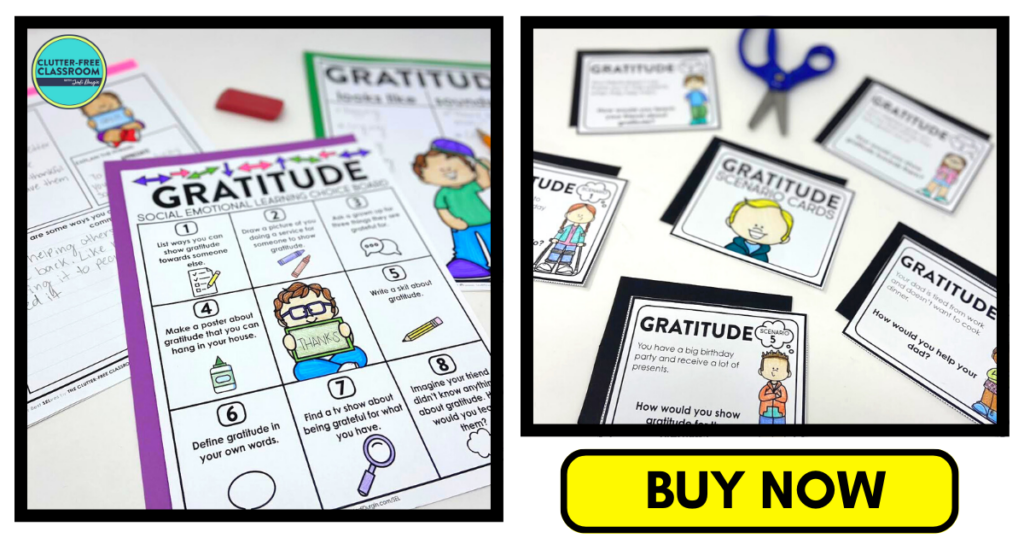
5 Tips and Ideas for Teaching Gratitude
Below are tips and ideas for teaching gratitude to students at the elementary level.
1. Read Aloud Picture Books about Gratitude
Picture books are a great way to introduce and teach an SEL topic. It gets students thinking about the topic and activating their background knowledge. Check out this list of picture books for teaching gratitude!
2. Watch Videos about Gratitude
There are tons of free online videos out there that promote social emotional learning. It’s a fun and engaging way to teach SEL skills that your students will enjoy. Check out these videos for teaching gratitude!
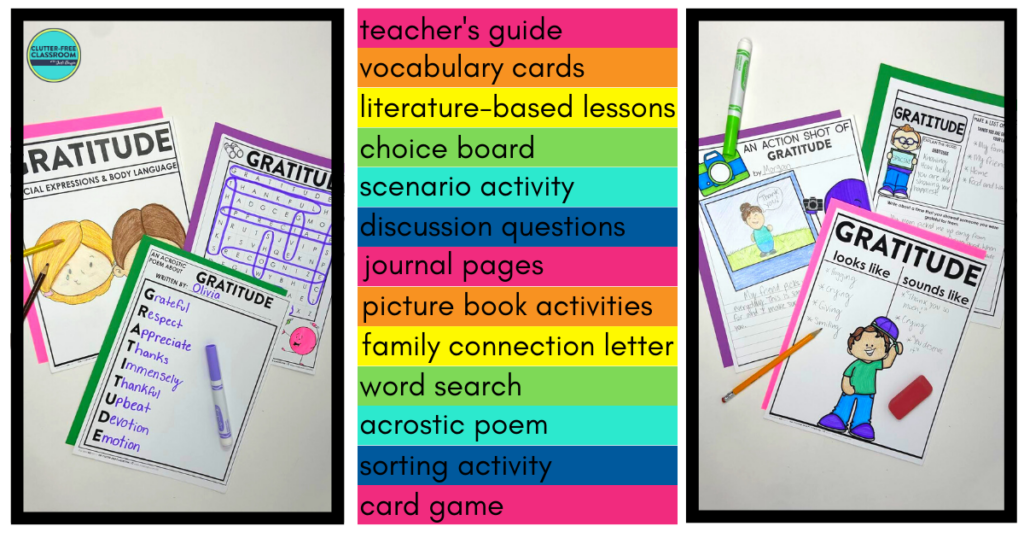
3. Explicitly Teach Vocabulary Related to Gratitude
Vocabulary words can help students develop understanding of gratitude and create connections through related words. Our gratitude SEL unit includes ten vocabulary cards with words related to the SEL topic. It is important for students to be able to see, hear, and use relevant vocabulary while learning. One idea for how to use them is to create an SEL word wall as students learn the words.
4. Provide Practice Opportunities
When learning any skill, students need time to practice. Social emotional learning skills are no different! Our gratitude SEL unit includes scenario cards, discussion cards, choice boards, games, and much more. These provide students with opportunities to practice the skills independently, with partners or small groups, or as a whole class.
5. Integrate Other Content Areas
Integrating other content areas with this topic is a great way to approach this SEL topic. Our gratitude SEL unit includes reading, writing, and art activities.
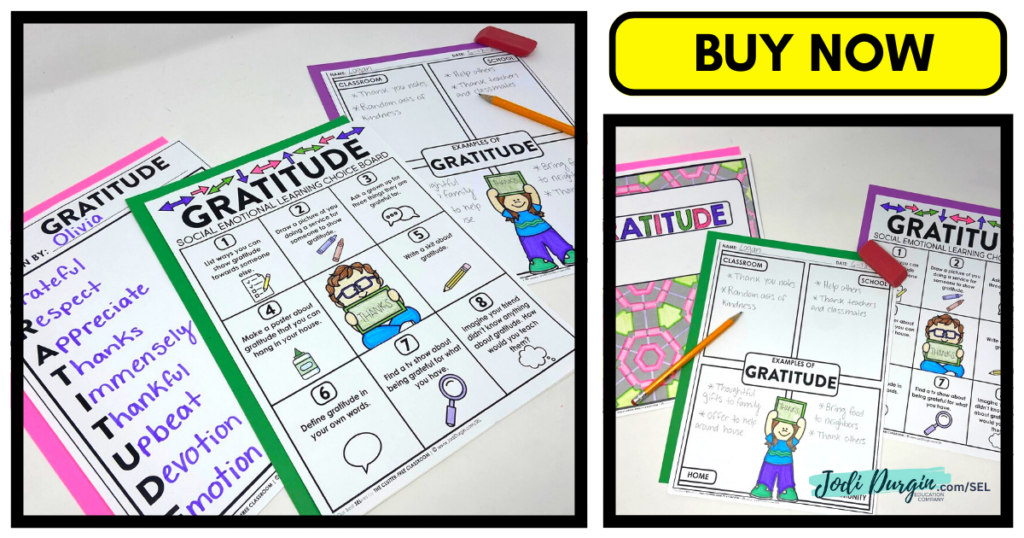

Skills Related to Gratitude
Gratitude, in the context of social emotional learning (SEL) or character education, refers to a state of appreciation and thankfulness for the positive aspects of life. While “gratitude” is the commonly used term, there are other words and phrases that can convey a similar meaning. These alternative words highlight different aspects of thankfulness, appreciation, and recognizing the good in one’s life. Here are some other words used in the context of gratitude:
- Thankfulness: Expressing gratitude and appreciation for the blessings and positive experiences.
- Appreciation: Recognizing and valuing the good qualities, actions, or contributions of others.
- Recognition: Acknowledging and appreciating the positive aspects or efforts made by others.
- Acknowledgment: Showing recognition and appreciation for something or someone.
- Grace: Displaying gratitude and thankfulness towards others or a higher power.
- Gratefulness: Being deeply thankful and appreciative of the kindnesses or blessings received.
- Thanks-giving: Cultivating a spirit of gratitude and expressing thanks for the abundance in one’s life.
- Counting blessings: Reflecting on and appreciating the positive aspects and good fortune in one’s life.
- Appreciative mindset: Adopting a positive and grateful outlook towards oneself, others, and life in general.
- Contentment: Finding satisfaction and gratitude in the present moment and circumstances.
These terms capture the essence of gratitude and encompass the qualities of thankfulness, appreciation, and recognizing the positive aspects of life within the realm of social emotional learning.
Download the SEL Activities
Click an image below to either get this individual gratitude unit or get ALL 30 SEL units!
In closing, we hope you found this information about teaching gratitude to elementary students helpful! If you did, then you may also be interested in these posts.

